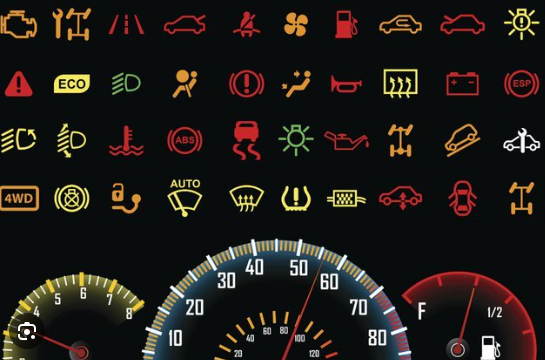Written by Samuel Carter.
In an age where technology aims to make life easier, one woman’s day took a turn for the absurd when she accidentally connected her Snapchat account to her car via Bluetooth. What started as a simple drive turned into a nightmare of emojis, confusion, and, unfortunately, minor injuries. It’s a classic case of “why we can’t have nice things.”
On an otherwise uneventful Tuesday, Maria Thompson, a tech-savvy millennial, found herself inundated with a barrage of new emojis on her car’s dashboard. Her initial excitement quickly turned to panic as she realized these emojis were not friendly faces or celebratory icons. Instead, they were her car’s warning lights, now masquerading as Snapchat notifications. Imagine seeing the engine light as a devil emoji or the oil light as a crying face. Hilarity ensued, followed by chaos.
As Maria attempted to decipher what each new “emoji” meant, her focus shifted from the road to the dashboard. The confusion escalated, and in the blink of an eye, her car swerved, resulting in a fender bender that left two people with minor injuries. The victims, also tech enthusiasts, were ironically on their way to a technology conference.
Decoding the Dashboard: When Emojis Go Rogue
The unexpected emoji invasion left Maria scrambling for answers. How could her beloved Snapchat, a source of daily joy and procrastination, betray her so spectacularly? The car’s manual offered no help, unless she was willing to search for meanings of “devil face” and “crying face” under “potential engine failures.” Spoiler: she wasn’t.
The irony of a tech-savvy woman being outsmarted by her own gadgets is not lost here. Maria, like many of us, trusted that her car’s Bluetooth system and her favorite app would play nice together. Instead, they conspired to turn her dashboard into a cryptic emoji puzzle. The check engine light transformed into a heart-eyes emoji was especially unhelpful, leading her to momentarily think her car was fine and in love, when in reality, it was far from it.
What makes this scenario even more ridiculous is the thought process behind such a disaster. Was it an unfortunate bug, or did someone at Snapchat have a sense of humor too twisted for their own good? Either way, Maria’s story is a stark reminder that sometimes, technology needs a timeout.
The Aftermath: Lessons Learned and Moving Forward
Following the incident, Maria received a plethora of sympathy and humorous comments on social media. Her misfortune quickly became a viral sensation, with memes and jokes flooding in. Some likened her experience to living in a Black Mirror episode, while others suggested she take a break from social media altogether.
The two injured parties, fortunately, walked away with minor bruises and a good story to tell. They even joined the online banter, humorously proposing a new feature where cars could communicate exclusively through emojis, sparking a new wave of mock debates about the future of car tech. Maria, meanwhile, decided to deactivate her Snapchat account temporarily, opting to stick with simpler, less treacherous technology, like a landline phone and a map.
While the situation could have been far worse, it serves as a humorous yet sobering reminder of our increasing reliance on technology and the unforeseen consequences that can arise. It’s clear that while connecting every aspect of our lives to the digital world has its perks, it also comes with its own set of unpredictable challenges.
Our Take
This incident is a perfect example of technology gone awry in the most unexpected and humorous way. While connecting our apps to our cars seems like a convenience, it’s a recipe for disaster if things go wrong. In this case, it turned a simple drive into a confusing and dangerous ordeal. The reliance on tech, while often beneficial, can lead to absurd and potentially harmful situations when the systems don’t play well together.
This is bad for the public because it highlights how easily our dependence on technology can backfire. Instead of enhancing safety and convenience, it can create distractions and confusion. Until tech companies ensure seamless integration without room for such errors, it’s essential to remain cautious. Perhaps it’s time to reevaluate how much we allow our gadgets to control our lives and find a balance that prioritizes safety over novelty.

